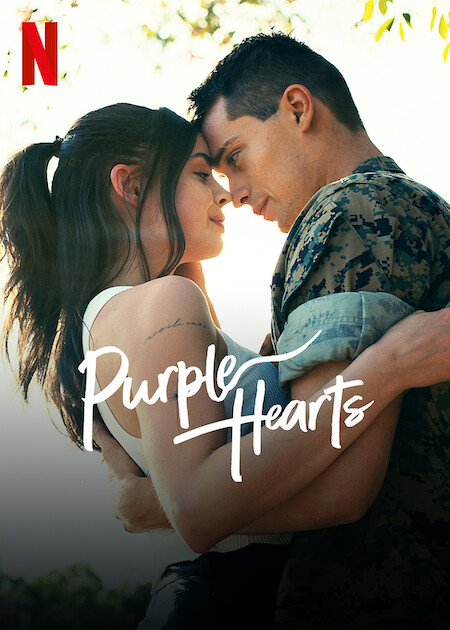‘Purple Hearts’: interesting concept, technically flawed, yet worth the watch
September 10, 2022
“Purple Hearts” is a romantic drama, starring former Disney star Sophia Carson, and Nicholas Galitzine. The Netflix original follows the story of a conservative Marine, Luke Morris and a liberal aspiring musician, Cassie Salazar.
When the two find themselves in financial hardships, they get into a fraudulent marriage to obtain military benefits, not expecting to actually fall in love despite their opposing political views.
Overall, the idea for this film is quite interesting but there were several execution flaws that held it from reaching its full potential. For instance, important storylines felt rushed and some of the dialogue came across as halfhearted.
However, the passion between Luke and Cassie makes viewers invested in their relationship.
The film is two hours long, yet some parts feel rushed and skipped over. Toward the end of the movie, it feels like one large montage where days pass by. Rather than developing these stories more, it is left to the viewer to interpret what happened in that timeframe.
It starts when someone breaks into Marisol’s, Cassie’s mom, apartment. Marisol calls Cassie, and Luke is the one who answers the phone and rushes to her apartment. It is important to note this is the first time Marisol meets Luke as Cassie never told her mom about him.
We assume the man who broke into the apartment is Luke’s former drug dealer, Johnno, as Luke attacks him telling him to stay away. Viewers are left with questions about when and how events actually transpired.
“She called because she was freaking out,” Cassie tells Luke. “She was trying to get into her car just now, and some guy with blood on his shirt rolled up, wanting to talk about you. About you and me, and how we’re in a fake marriage. Threatening to turn us in.”
Marisol is barely seen throughout the movie, yet she is part of one of the most important interactions — when Luke’s secret is brought to light. Yet, this scene happens over a phone call that is not shown on screen.
Not even 20 minutes later, Cassie gets a call that Luke has been turned in, another scene that is not shown. A lot of tension was built for this moment, but when it finally came it was thrown in like an afterthought.
In addition to the pacing issues, some of the dialogue comes across as forced, unnatural and uncomfortable.
For example, Luke and Cassie’s first interaction comes across as stilted. He apologizes for a crude comment his friend makes and introduces himself. When she tries to stop the conversation from going any further, he merely tells her, “You know, we’re not all alike.”
“Because your friend is talking about his right to touch my ass,” Cassie promptly responds. “Which apparently, you also feel entitled to.”
Naturally, this may not be how someone responds to another person introducing themselves. The clever, well-thought-out comebacks are quite unrealistic and leave the interactions feeling manufactured.
Despite the small technical flaws, this film does capture the viewer’s attention with its passionate characters. Anyone who loves cheesy romantic dramas may find it easy to look past some of the dialogue and rushed scenes.
The best moments of the film were when the pair share intimate moments with each other. Moments like when Cassie helps Luke take a bath because he’s injured filled the viewer’s heart with joy. Unlike other parts of the film, these scenes are carefully constructed and raw.
Overall, the film is an interesting, unique take on the enemies-to-lovers trope. Despite the issues present in the film, it is the love story that makes “Purple Hearts” worth watching.







